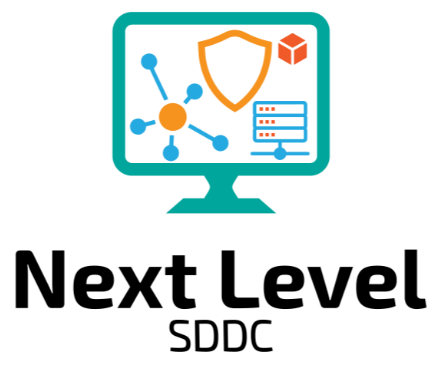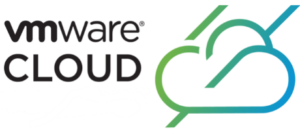2024 is already paving out to be an interesting year for most organizations running VMware within their datacenters. Changes in licensing include simplification by combining several products together in order to provide less SKUs, and also the way they used to license CPU in the past is now gone (sockets vs cores). This has drawn a lot of attention since most companies budget roughly 5-10% YoY cost increase within their books, however, a lot of organizations are starting to see a 2x, 3x, 5x, 10x price increase for VMware licensing instead. Also, there seems to be a misconception that Broadcom was going to offer a “trade-in” credit for the perpetual licenses owned, however, it has been cleared up that this “trade-in” they mentioned simply meant migrating from perpetual to subscription licensing, not a monetary credit for the licenses they paid for at one point. Let’s make sure to clear any misconceptions though, not every customer is going to experience a price increase this year. Some may continue paying relatively the same if they were already leveraging most of the products currently included in the VCF/VVF bundles.
With all the being said… what are some of the hypervisor options for the Enterprise world?
VMware vSphere/ESXi by Broadcom: Clear leader in this space overall, not just enterprise, however, there has been a lot of turbulence lately due to the acquisition. It certainly offers the most robust features, and has the biggest eco system around it. Some companies are starting to receive their “renewals” and most are being very vocal about the price hike they are seeing due to the latest change in licensing from perpetual to subscription, and also from physical CPUs to CPU cores.
Microsoft Hyper-V (Azure Stack HCI is the new name, with its own hyperconverged storage platform included): I would say that Azure Stack HCI is probably number two when it comes to 3rd party tools around it. I have never been a huge fan of it simply because it runs on Windows Server (nobody enjoys patching their infrastructure monthly), however, it can offer a great opportunity to save some costs with organizations that already have a heavy Microsoft presence (Ever heard of EDP? Enterprise Discount Programs?)
Nutanix AHV: A part of the Nutanix Enterprise Cloud Platform, AHV is a KVM-based hypervisor that has gained popularity in the past few years for its simplicity and tight integration with the rest of the Nutanix stack (Files, Objects, Microsegmentation, Containers, DRaaS, DBaaS, etc). Definitely the top contender if the timing is right and you are in the market for new hardware as well, and not just looking for a new Hypervisor. This product can end up replacing your entire 3-tier architecture, simplifying your environment, reducing some of the infrastructure cost and setting up your org for a true multi cloud experience. AHV is included for free when subscribing to Nutanix AOS (software defined storage) software. One of the biggest advantages over VMware is that their license is by core, and can include as much storage as you can stuff inside the servers (24x 15.36TB disks anyone?!)
Citrix Hypervisor (formerly XenServer): Used to be a cost-effective option for any organization leveraging a heavy Citrix presence within their environment due to the integration with its products. Licensing is still offered by sockets instead of cores, so you can get very dense servers for a minimal cost. Unfortunately R&D has been terminated for this product, but there is an up and coming open-source, community powered version of it called XCP-ng (Xen Cloud Platform – next generation).
KVM (Kernel-based Virtual Machine): An open-source option that uses Linux OS to become a hypervisor. KVM is a part of many Linux distributions and is used by organizations looking for a cost-effective yet powerful virtualization solution. What is the downside? It does not have as many features as the others, and the support could also be hit or miss.
RedHat Virtualization (RHV): Based on KVM, RHV is an enterprise-grade solution that is integrated with Red Hat’s software ecosystem, making it a preferred choice for enterprises using other Red Hat products. Downside? It was announced that Red hat will be ending support of RHV in 2026.
RedHat OpenShift: OpenShift Virtualization is the long term replacement for RHV because VMs are old school and will be no longer needed, just like mainframes a few years back /end of sarcasm. On a more serious note, OpenShift allows the VM administrators to bring their VMs into containerized workflows by running a VM within a container, where they can deploy and manage VMs side-by-side with containers, all on a single platform.
RedHat OpenStack: This platform leverages virtual resources to build and manage private and public clouds. It combines RHEL Servers and KVM into a secure infrastructure. Just as OpenShift is based on Kubernetes, Red Hat OpenStack Platform is based on the OpenStack open source project. Another great platform choice for VM management in a private cloud environment.
Oracle VM Server: Designed mainly for use with Oracle software, Oracle VM Server is the official hypervisor recommended for Oracle’s applications and databases. I remember using it in the past to avoid having to license an entire VMware environment just to host a few Oracle VMs. The oracle team was very persistent about making sure that the Oracle workloads resided in a Oracle VM Server environment to avoid any unforeseen issues.

Now let’s move to the up and coming products that I have started to notice this year:
Proxmox VE: An open-source server virtualization management platform which combines KVM and LXC, providing a robust environment for managing VMs and containers. Subscription for Basic, Standard and Premium support are now available, depending the expected support response time for it.
Verge IO: Based on QEMU/KVM, they brand themselves as “THE VMware Alternative”. They provide not just server virtualization, but the entire stack (storage, network, server, GPU, etc). Starting with a minimum of 2 servers up to 200 per cluster, and includes its own V2V software to migrate any VMware VMs over, my only question remains…is the product ready for the enterprise organizations to trust their Tier 0/1 workloads residing on it yet?
Scale Computing: The Scale Computing self-healing platform is able to automatically identify, mitigate, and correct problems in real-time, allowing the IT staff to focus on business challenges instead of keeping the lights on. The HyperCore software eliminates the need for VMware subscriptions, DR software, servers, and shared storage, replacing them with a fully integrated, highly available HCI system.
KubeVirt: This product is an extension for Kubernetes aimed at providing virtual machine management on top of it. It enables you to run both container and virtual machine workloads on the same cluster, providing flexibility in how applications are deployed and managed. This is all particularly useful for organizations looking to migrate from traditional virtualization solutions to containers but still require virtual machines for certain applications.
XCP-NG: This is an open-source virtualization platform based on XenServer which provides a robust and cost-effective solution for managing virtual machines. XCP-ng stands out for its commitment to open-source principles, providing a powerful and flexible virtualization solution that caters to a wide range of users from hobbyists to large enterprises.
Are there any other that I may have missed?
Are you considering moving away from VMware due to the recent licensing cost increases?
Have you used any of the up and coming products yet?
What has your experience been so far?



